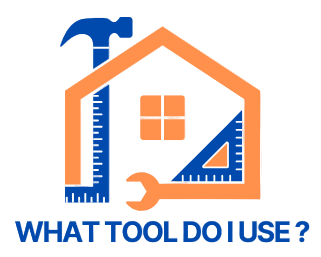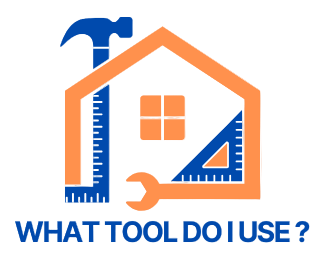To use a tape measure accurately, start from the hook, keep the tape flat, and read at eye level. Double check every measurement before cutting or drilling. Consistency, care, and correct tape handling ensure precision, making this one of the most essential DIY skills for beginners. ✅
Learning to use a tape measure properly might not sound exciting, but it’s one of the most essential DIY skills for beginners. Whether you’re hanging a shelf, cutting wood, or fitting new flooring, an accurate measurement can mean the difference between a professional looking finish and a frustrating do over. 📏✨
📖 View Table of Contents
- Why Measuring Accurately Matters
- Understanding Your Tape Measure
- How to Read a Tape Measure (for Beginners)
- Techniques for Measuring Accurately
- Common Measuring Mistakes (and How to Avoid Them)
- Caring for Your Tape Measure
- Other Essential DIY Tools for Beginners
- 🛠 Product Summary
- Read Next: Related DIY Guides
Why Measuring Accurately Matters 🎯
When starting out in DIY, you’ll quickly realise how vital accurate measurements are. Every project, no matter how simple, depends on them. A shelf cut just a few millimetres short won’t sit level. A kitchen unit installed out of line can ruin the whole look of the room. 🪚
Taking the time to measure properly saves money, materials, and frustration. It helps you plan ahead, reduce waste, and gives you confidence that your project will turn out as expected. Accuracy isn’t about perfection, it’s about consistency and care.
Understanding Your Tape Measure 📏
Tape measures come in a few shapes and sizes, but they all work on the same principles. Here’s what to look for when choosing or understanding yours:
1. The Case
The case holds the coiled metal or fibreglass tape. A sturdy, ergonomic case makes it easier to grip and retract smoothly. Many have a belt clip or wrist strap, which is useful when working at height or moving around. 🔩
2. The Blade
The blade is the actual measuring tape. Most are made from steel, marked in both millimetres (mm) and inches. The wider the blade, the less likely it is to bend or collapse when extended — the distance it can hold without bending is known as its “stand-out”.
3. The Hook
At the end of your tape is a small metal hook. It slides slightly back and forth - this is intentional! It compensates for the thickness of the hook when measuring inside vs outside edges. If it didn’t move, every measurement would be off by about 1mm. ⚙️
4. The Lock
Most tape measures include a locking button or switch that holds the blade in place. This prevents it snapping back unexpectedly (and pinching your fingers!).
5. The Markings
Metric measurements are standard in the UK. Your tape will show millimetres, centimetres, and metres. Some also show inches for flexibility: Handy if you’re following older plans or say an American tutorial online.
How to Read a Tape Measure (for Beginners) 🔍
Reading a tape measure is simple once you know what each line means. Here’s how to make sense of it step by step.
1. Understand the Units
On metric tapes, each small line equals 1 millimetre (mm). Ten millimetres make one centimetre (cm), and 100 centimetres make one metre (m). Simple enough!
2. Spot the Key Markings
Larger numbered lines mark every centimetre. Numbers printed in bold (10, 20, 30, etc.) show every ten centimetres, helping you read longer measurements quickly. 🧠
3. Start from the Hook.
Place the metal hook flush against the edge of what you’re measuring. If you’re measuring inside something (like a shelf gap), push the hook firmly against the back edge so it slides back slightly, compensating for its own thickness.
4. Read at Eye Level.
Always look directly over the point where you’re reading. Viewing at an angle can cause a “parallax error”, where the measurement appears shorter or longer than it really is. 👀
5. Record Carefully.
Write measurements down straight away, and include units (e.g., 523mm not just 523). Many DIYers lose accuracy simply by misreading their own notes later!
Techniques for Measuring Accurately 🛠️
Now that you can read your tape confidently, let’s cover some reliable techniques to improve precision, even on tricky projects.
1. Hook, Hold, and Align
Use the hook properly. For example, hook it over the end of a board and pull the tape tight. Keep the tape flat against the surface without twists or bends. A bowed tape can add a few millimetres easily.
2. Use the Correct End
For outside measurements (like the length of a plank), hook the end over the edge. For inside ones (like cupboard width), push the hook against the back edge. The adjustable hook accounts for the difference automatically. ✅
3. Mark with a Sharp Pencil
Always use a fine, sharp pencil or marking knife for accuracy. Fat, dull pencil lines can throw off your cut by several millimetres. ✏️
4. Check Twice, Cut Once
Old advice, but still golden. Double-check your measurement before making any cut or drilling hole. If in doubt, measure again!
5. Use an Assistant or Fix the End
When measuring long distances (over 2m), tape can sag. Ask someone to hold the other end, or secure it temporarily with masking tape or a clamp to keep it straight. 👷
6. Measure Diagonally for Square Checks
When checking whether something is square (like a picture frame or decking), measure diagonally from corner to corner. If both diagonals are equal, it’s square. 📐
7. Use Reference Points
For repeated cuts or markings, measure once and create a jig or stop block. This ensures consistency across multiple pieces.
8. Consider a Laser Measure for Large Spaces
For room measurements, ceilings, or awkward spaces, a laser distance measurer gives instant digital readings. It’s quick, precise, and avoids tape sagging errors. 🔦
Common Measuring Mistakes (and How to Avoid Them)
Even experienced DIYers slip up occasionally. Here are the most frequent measurement errors — and how you can avoid them.
- Using a damaged tape: A bent or twisted blade won’t lie flat, giving inaccurate readings. Replace it if it’s kinked.
- Misreading the scale: Learn the pattern of millimetres and centimetres clearly to avoid confusion.
- Ignoring the hook movement: Never tighten the hook with pliers! That tiny movement is vital for accuracy.
- Not measuring from the same side: Always measure from a consistent reference point to maintain uniformity.
- Forgetting to write down measurements: Relying on memory leads to mistakes, especially during long projects.
Caring for Your Tape Measure 🧽
A tape measure may be small, but a little care keeps it accurate and lasting for years. Follow these quick maintenance tips:
- Wipe it clean after each use: Dust and grit can affect the retracting mechanism.
- Retract it slowly to avoid snapping the hook back inside the case.
- Store it in a dry place to prevent rust and moisture damage.
- Oil the hook pivot lightly every few months to maintain smooth movement.
- Check for cracks or blade bends before any major job. Replace if necessary.
Other Essential DIY Tools for Beginners 🔧
Now that you’ve mastered accurate measuring, it’s time to explore other tools that form the backbone of any good DIY setup. Combining the right essential DIY tools for beginners gives you the confidence to tackle more advanced projects safely and efficiently.
📚 Read Next: Related DIY Guides
Remember: good measurement is the foundation of every successful DIY project. Take your time, stay consistent, and always double-check your work - your results will thank you! 💪
🛠 Product Summary
Here’s a quick recap of the key measuring and layout tools mentioned in this guide:
Each of these tools supports accurate measuring and layout, helping beginners achieve reliable, professional results. 🧰
🛠 Recommended Essential DIY Tools for Beginners
🔒 Affiliate links: This post may include affiliate links, meaning I may earn a small commission if you buy through them - at no extra cost to you. I only recommend tools I trust and use myself.
🔗 Recommended: STANLEY FATMAX 8m/26' Tape Measure
Durable tape with Blade Armour coating, 3.3m standout and magnetic hook for precise solo measuring on DIY projects.
View Product🔗 Recommended: OX Premium Trade Spirit Level
High-accuracy spirit level for checking level and plumb lines when marking out shelves, cabinets and frames.
View Product🔗 Recommended: WORKPRO 12" Combination Square
Versatile layout tool for marking 90° and 45° lines, checking corners and transferring accurate measurements to your materials.
View Product





